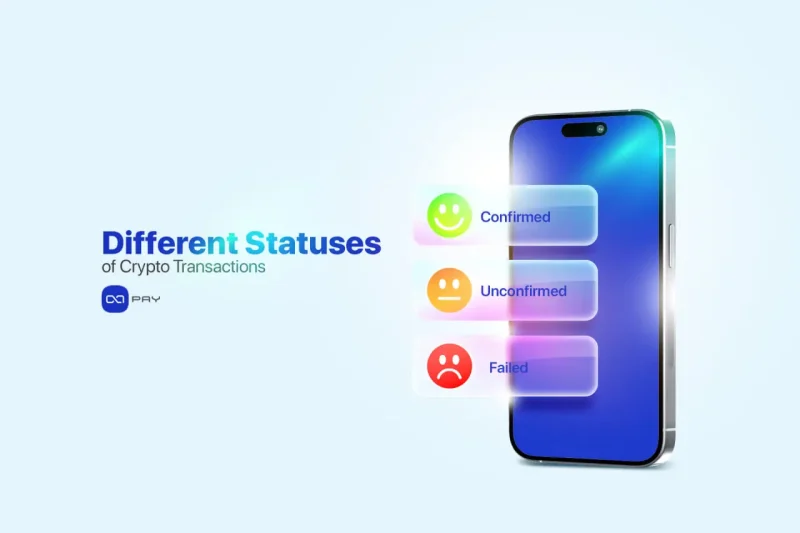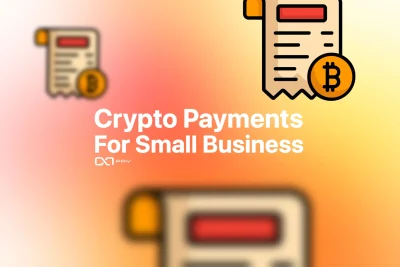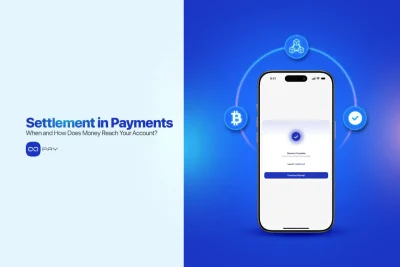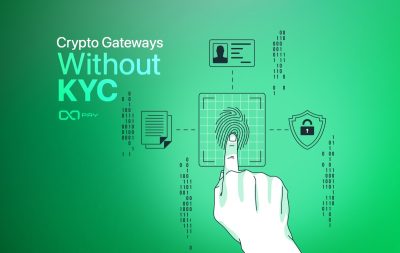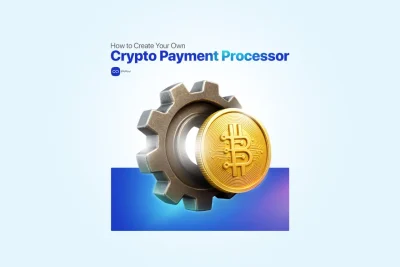Криптовалютные транзакции проходят несколько этапов, прежде чем достигают окончательного подтверждения в блокчейне. Пользователям и компаниям необходимо знать статус криптовалютной транзакции (подтверждённая, неподтверждённая или неудавшаяся), чтобы отслеживать платежи, устранять задержки и избегать потенциальных проблем. Каждый статус имеет свои причины и решения. В этой статье рассматриваются эти типы транзакций, освещается роль мемпула и рассматриваются способы транзакционные сборы влияют на подтверждение, и делится практическими методами отслеживания и исправления неудачных транзакций.
Раздел 1: Что такое неподтвержденная сделка и что влияет на ее подтверждение?
А криптовалютная транзакция остается неподтвержденной после того, как пользователь передает ее в сеть блокчейна, но до того, как майнеры включат ее в блок. Пока транзакция не получит достаточное количество подтверждений, она остается в этом неподтвержденном состоянии.
Почему сделки остаются неподтвержденными?
Задержки с подтверждением могут быть вызваны несколькими факторами:
- Перегруженность сети: Большие объемы транзакций могут привести к задержкам, поскольку майнеры отдают предпочтение транзакциям с более высокими комиссионными.
- Низкие комиссии за транзакции: Майнеры или валидаторы могут игнорировать транзакции с минимальными комиссиями в пользу более высокооплачиваемых.
- Требования к подтверждению, специфичные для блокчейна: Разные блокчейны требуют разного количества подтверждений, прежде чем считать транзакцию завершенной (например, биткойн обычно требует 3-6 подтверждений для обеспечения безопасности).
- Технические проблемы: Перебои в работе сети или неисправности кошелька могут задержать некоторые транзакции.
Пользователи должны всегда следить за статусом транзакций своих криптовалютных платежей, особенно если речь идет о низких комиссиях или перегрузках сети.
Как долго сеть подтверждает транзакцию?
- На сайте Биткойн, подтверждение может занять От 10 минут до нескольких часовВ зависимости от активности сети и комиссии за транзакции.
- На сайте ЭфириумПодтверждения обычно несколько минут но в условиях перегруженности может занять больше времени.
- На сайте более быстрые блокчейны таких как Solana или Tron, сделки обычно подтверждаются в секунды.
Если транзакция остается неподтвержденной в течение необычно долгого времени, пользователям следует проверить состояние сети и рассмотреть такие варианты, как увеличение комиссии (RBF или CPFP в Биткойне) или ретрансляция транзакции.

Раздел 2: Что такое Mempool и почему некоторые транзакции задерживаются?
Что такое пул памяти?
The Пул памяти (MemPool) это временное хранилище для всех неподтвержденных транзакций. Когда пользователь отправляет транзакцию, она сначала попадает в mempool, где майнеры или валидаторы ждут, пока ее заберут.
Почему некоторые транзакции остаются в пуле памяти?
- Низкий приоритет из-за низких сборов: Если плата за транзакцию слишком низкая, майнеры могут игнорировать ее в пользу более высокооплачиваемых транзакций.
- Перегрузка сети: В периоды высокой активности мемпул может быть перегружен, что приводит к задержкам.
- Конкурирующие транзакции: Если многие пользователи совершают транзакции одновременно, сеть подтверждает транзакции с более высокой комиссией в первую очередь.
Перегруженный мемпул напрямую влияет на статус криптовалютных транзакций, часто оставляя их неподтвержденными в течение длительного времени.
Что происходит с застрявшей транзакцией?
Если транзакция остается неподтвержденной слишком долго, сеть может в конце концов исключить ее из пула памяти. В этом случае кошелек прекращает транслировать транзакцию, и пользователь должен повторно отправить ее с более высокой комиссией.
Раздел 3: Роль комиссионных за транзакции в ускоренном подтверждении
Как сети блокчейн определяют комиссионные за транзакции?
Блокчейн-сети используют систему, основанную на комиссионных сборах, и отдают предпочтение операциям с более высокими комиссиями. Сеть определяет размер платы на основе:
- Сетевой спрос: Повышенная загруженность дорог ведет к увеличению платы за проезд.
- Размер транзакции: Большие транзакции требуют больше места для хранения данных, что приводит к увеличению расходов.
- Установленные пользователем сборы: Некоторые кошельки позволяют пользователям устанавливать комиссию вручную, что влияет на то, как быстро сеть подтверждает транзакцию.
Стратегии, обеспечивающие ускоренное подтверждение
Выбор правильного уровня комиссии очень важен для улучшения состояния криптовалютных транзакций, обеспечения своевременных подтверждений и предотвращения задержки платежей.
- Используйте динамическую корректировку платы: Многие кошельки предлагают оптимальную комиссию в зависимости от условий сети.
- Выбирайте приоритетные тарифы: В таких сетях, как Ethereum, использование повышение платы за газ ускоряет обработку.
- Использовать комиссионный бумпинг (RBF и CPFP в Bitcoin):
- Замена на плату (RBF): Позволяет пользователям повторно отправлять транзакцию с более высокой комиссией.
- Ребенок платит за родителя (CPFP): Последующая транзакция оплачивается по более высокой ставке, чтобы стимулировать майнеров подтвердить первоначальную транзакцию.
Выбор подходящей платы, основанный на условиях сети в реальном времени, помогает избежать ненужных задержек.

Раздел 4: Как отслеживать и разрешать неудачные транзакции
Как отслеживать статус транзакции
Исследователи блокчейна позволяют пользователям в режиме реального времени получать информацию о статусе их криптовалютных транзакций - подтвержденных, ожидающих или неудачных. Пользователи могут проверить статус своей транзакции с помощью блокчейн-эксплореров, которые предоставляют обновления в режиме реального времени. К числу популярных эксплореров относятся:
- Биткойн: blockchair.com, blockstream.info
- Ethereum: etherscan.io
- Трон: tronscan.org
Чтобы проверить транзакцию:
- Введите идентификатор транзакции (TXID) в исследователь блокчейна.
- Просмотрите количество подтверждений.
- Если транзакция не подтверждена, проверьте активность mempool и предполагаемые сетевые сборы.
Как исправить неудачную транзакцию
Транзакции могут провалиться из-за низких сборов, ошибок сети или сбоев в выполнении смарт-контрактов. К распространенным решениям относятся:
1. Ожидание уменьшения перегрузки сети
Если перегруженность задерживает транзакцию, ожидание периодов пониженной активности может помочь сети подтвердить ее.
2. Ретрансляция сделки
Некоторые кошельки позволяют пользователям ретранслировать транзакции, выпавшие из мемпула.
3. Использование методов повышения платы
Как уже говорилось в разделе 3, использование Замена на плату (RBF) или Ребенок платит за родителя (CPFP) может продвинуть сделку, предложив более высокую плату.
4. Связь с получателем или службой поддержки кошелька
В транзакциях на основе смарт-контрактов сбои могут быть вызваны ошибками при выполнении контракта. Проверка журналов контрактов и обращение в службу поддержки могут помочь решить такие проблемы.
Заключение: Обеспечение беспрепятственного проведения криптовалютных транзакций
Понимание статуса криптовалютной транзакции помогает пользователям ориентироваться в сложностях платежей на основе блокчейна. Основные выводы:
- Неподтвержденные сделки распространены и могут занимать больше времени из-за перегруженности сети или низких тарифов.
- Пул памяти служит местом ожидания транзакций до их подтверждения майнерами.
- Комиссии за транзакции играют важную роль в том, как быстро подтверждается транзакция.
- Пользователи могут отслеживать и разрешать неудачные транзакции использование блокчейн-исследователей и стратегий повышения платы.
Применяя лучшие практики, такие как выбор оптимальной комиссии, отслеживание транзакций и использование методов корректировки комиссии, пользователи могут обеспечить более быстрые и надежные криптовалютные платежи.
Компаниям не придётся гадать, прошёл ли криптовалютный платёж. OxaPay поможет вам автоматически обнаруживать и обрабатывать подтверждённые, неподтверждённые или неудавшиеся платежи.
Создайте более плавный процесс оформления заказа с помощью Криптовалютный платежный шлюз OxaPay.
